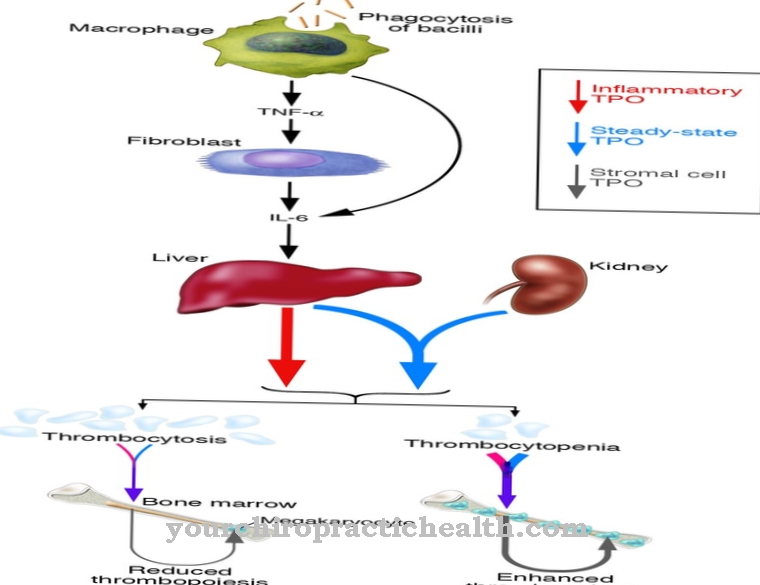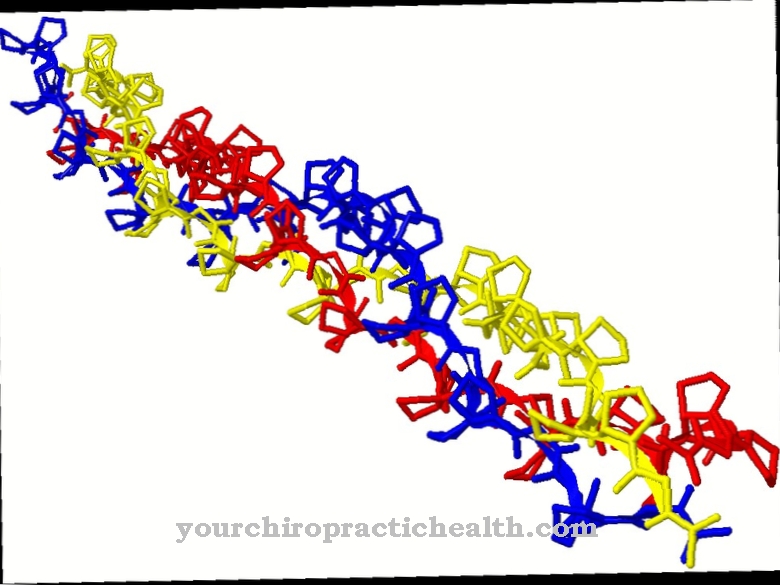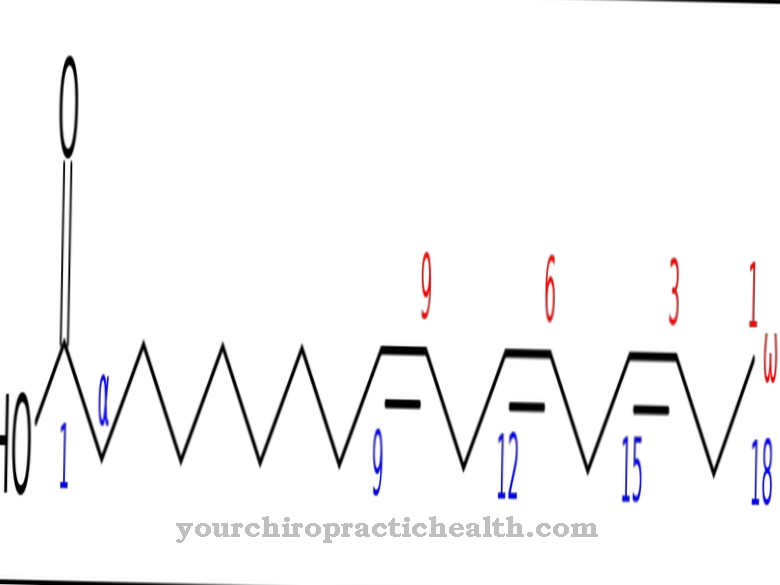Adipocytes are the cells of adipose tissue. In addition to storing fat, they also perform many other tasks. Adipose tissue produces many hormones and is the largest endocrine organ in the human body.
What are adipocytes
The adipocytes are not just cells that store fat. They take part very actively in the overall metabolism. In doing so, they combine to form multinucleated cells, with the individual cells of the network being connected via so-called gap junctions.
There are two types of adipocytes. These are the univacuolar and plurivacuolar adipocytes. The univacuolar adipocytes represent the white adipose tissue and contain only one vacuole, which has the task of storing fat. The vacuole can occupy up to 95 percent of the cell volume and presses the other cell organelles and the cell nucleus to the edge of the cell. The cell therefore consists for the most part of storage fat. The plurivacuolar adipocytes belong to the brown adipose tissue and have several vacuoles that can be filled with storage fat. However, these do not push the other organelles to the cell edge.
They have many mitochondria, which burn fat directly inside the cell and thus generate heat. The brown adipose tissue becomes active when it cools down, for example. By burning fat, the organism ensures the maintenance of body temperature. The ratio of brown to white adipose tissue is crucial for energy consumption. However, brown adipose tissue hardly plays a role in adult humans, so that fat reduction cannot be based on its activation.
Function, effect & tasks
The most important job of adipocytes is to store body fat. The white fatty tissue is mainly responsible for this. In the brown adipose tissue, energy is generated to a small extent by burning fat. The generation of energy within these cells takes place independently of the general energy metabolism of the body.
They only serve to maintain body temperature when the outside temperature drops. To do this, the fat stored in the adipocyte is burned directly. In humans, this function is normally only relevant in infants. Later, the brown adipose tissue atrophies. However, there may be some people who cannot gain weight because they still have a relatively large amount of brown adipose tissue. However, research has shown that the role of adipocytes is much more complex than the function of fat storage suggests. The adipose tissue is the largest endocrine organ, which intervenes very actively in the metabolism. The amount of stored fat plays a very important role.
Among other things, the adipocytes produce, in addition to hundreds of active substances, three important hormones that have a regulating effect on the metabolism. These are the hormones leptin, resistin and adiponectin. Leptin inhibits the feeling of hunger. The more storage fat the adipocytes contain, the more leptin is secreted. An additional dose of leptin to produce a feeling of satiety is unsuccessful, however, because the leptin content of an obese person is already high and the additional dose no longer has any effect. Resistin and adiponectin control insulin resistance.
The more fat is stored in the adipocytes, the lower the concentration of adiponectin. However, adiponectin promotes insulin sensitivity. Conversely, resistin increases insulin resistance. How these hormones can still be used therapeutically in diabetes needs further research.
Education, occurrence, properties & optimal values
As a rule, the number of adipocytes remains the same throughout life. Only the volume of the cells changes when fat is stored or released. An adipocyte can store a maximum of 1 microgram of fat. If the absorption capacity of all adipocytes in the body is reached and more fat is still being built up than is broken down, cell divisions are set in motion in the preadipocytes, the so-called steatoblasts.
New adipocytes develop from the steatoblasts. The number of fat cells increases in this case. However, the number of adipocytes remains the same with a reduction in fat. In contrast to the existing adipocytes, the newly formed small fat cells are insulin-sensitive. After the new fat cells have differentiated, they also become insulin-resistant again.
Diseases & Disorders
Obesity has become a widespread disease. The more fat is stored in the adipocytes, the greater the risk of developing type II diabetes.
Diabetes, in turn, is an underlying disease for many degenerative processes in the body. Finally, the metabolic syndrome can develop with a complex of diseases such as obesity, diabetes, disorders of lipid metabolism, atherosclerosis and cardiovascular diseases. During the development of obesity, insulin resistance decreases over time. Insulin ensures that blood sugar, fatty acids and amino acids are channeled into the body cells in order to generate energy there or to take care of the body structure. The adipocytes store excess energy that is not used up in the form of fat. Hormonal processes in the fat cells in turn control insulin resistance in order to limit the unlimited supply of glucose.
This process is actually normal. However, it gets out of control if calories are still supplied that can actually no longer be stored. Insulin resistance is developing into a chronic condition. It is true that insulin is produced in large quantities. However, it is becoming ineffective. The blood sugar level rises. The pancreas is stimulated even more to produce insulin. This goes on until production is exhausted. Now the relative insulin deficiency due to the insulin resistance becomes the absolute insulin deficiency. Manifest diabetes with all its consequences has developed.



























